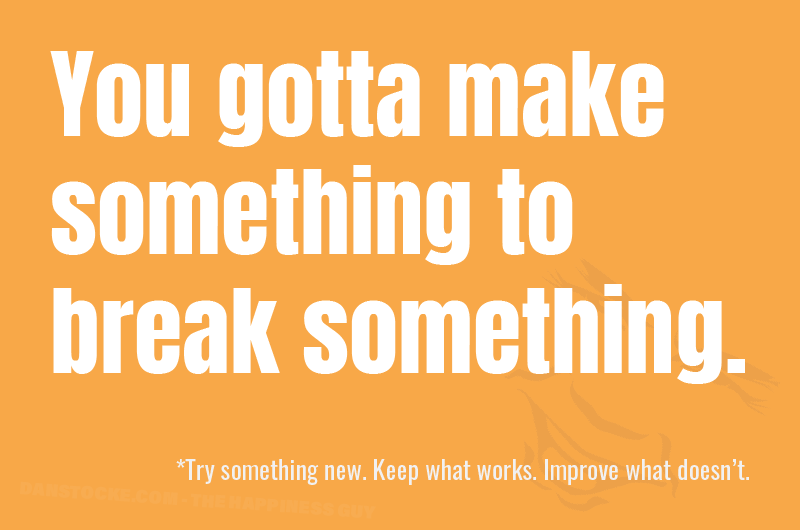You Gotta Make Something So You Can Break Something
The distance between thinking something is going to work and actually making it work is as wide and varied as your search history.
Having successfully brought a product to market from concept through licensing1 I get a lot of requests from people wanting to take their inventions to the next level. My first question is always: do you have a prototype? Often they will tell me they don't need to build a prototype because they “know the thing will work.”
Yeah…
The beautiful thing about building stuff in your mind is that it always works flawlessly. Our imaginations are perfect engineers (NOT!). Taking concepts from your brain and materializing them in the real world comes with a set of rules and limitations our silly little brains just refuse to account for. Until you make something, you haven’t made anything (and I’ll politely pass on the “opportunity” thank you very much).
I always urge people to build a prototype as a next step. It doesn’t have to be perfect. It can be as crude as it needs to be to get the job done, but it needs to be as close as it can be to the finished product as you envision it. The first Zip-It was a zip-tie tied to a key chain with barbs cut into the side of it (the zip-tie, not the keychain). It was crude, but it worked. The product that eventually went to market was a more elegant design of a barbed zip-tie on a keychain.
Building the actual thing has a key benefit:
YOU HAVE SOMETHING TO BREAK
The distance between thinking something is going to work and actually making it work is wide and varied. The first thing you get to discover is if the thing actually works as you envision it. More than likely it doesn’t (that’s a good thing). Nothing (and I mean nothing) ever works perfectly straight out of the gate. Whatever you thought the thing was going to be in your head ends up being vastly different when you actually build it.
Once you have an actual thing in your hands, you can put it through its paces. You can test its functionality. You can find out if there is something superficial in its design. You can pick apart what can be stripped back and what can be improved upon. You also get an idea of how the thing might be manufactured at scale.
THIS GOES FOR EVERYTHING
This rule - You Gotta Make Something So You Can Break Something - applies to more than physical products. It works for damn near everything: plans, processes, hell even Substack articles. What you are reading right now didn’t glide onto the page as the perfect masterpiece that you are reading right now. I barfed out a bunch of ideas as close to what I had in my head as possible and then rewrote it a bunch of times - piling words and jamming sentences like a guy trying to overstuff a hoagie. This sentence that you are reading right now has gone through at least 3 revisions2.
I am currently putting together three separate presentations and each one is a make-it-to-break-it affair. I know what I want to say and how I want to present it, but putting it in an actual slideshow reveals the limitations of the swirling thoughts inside my brain. Getting the ideas out of my head and into something real is the only way to truly organize my thoughts fully.
When we established processes at my manufacturing company3, we did so explicitly knowing they would break. That was the point of it. Try something new and see if it works. Keep what does. Improve what doesn’t. We would make it, specifically, to find out where it would break.
LIFE IS LIKE TRYING TO MAKE ART
I was at a painting party with a bunch of friends. Not a “paint the living room” kind of party, but a “canvas, palettes, and copious amounts of wine” kind of party. One friend commented that painting goes through three phases:
When you start: you have a clear vision of what you want to create and everything is great.
Halfway through: your painting is nothing like what you had in your head and you are convinced it is absolute garbage.
Near the end: your painting has taken on a life of its own and is better (okay, maybe “different” is a more appropriate word) than you thought it was going to be.
And ain’t that what life is all about? Throw some paint on a canvas with intention and make the best of whatever colors come of it.
You gotta make something, keep what works, and fix where it breaks.
Zip-It drain cleaner - the long plastic strip with barbs running along its edges. Slide it into a clogged drain and yank out the clog.
That's a lie. That sentence actually came out perfectly formed. I didn’t touch it.
World Block - manufacturer of steel forms for the concrete industry.





I LOVE my zip it! It has saved my drain soooo many times. Very true about making art too.